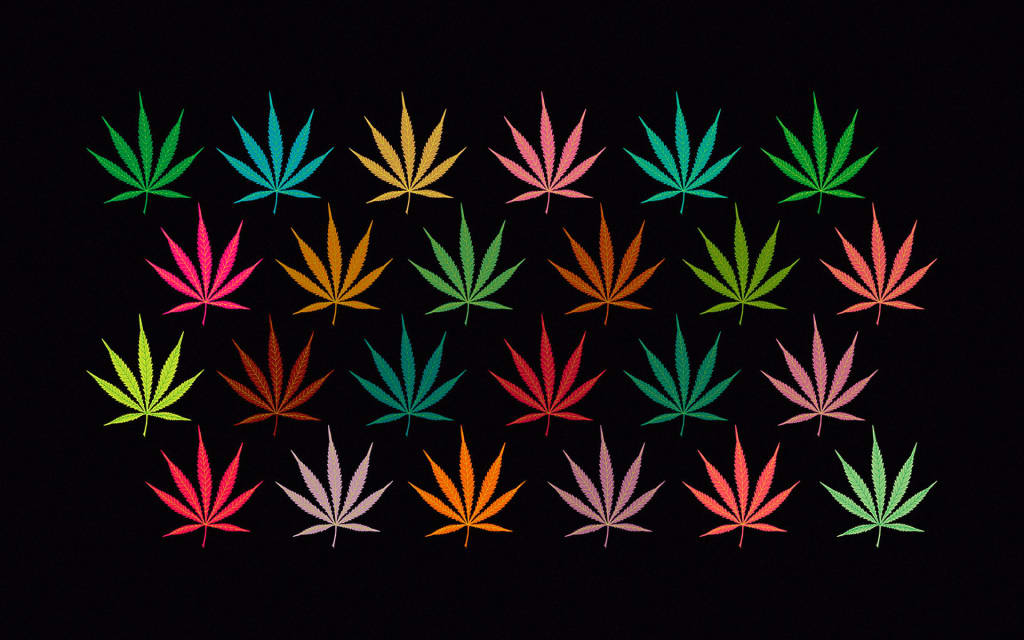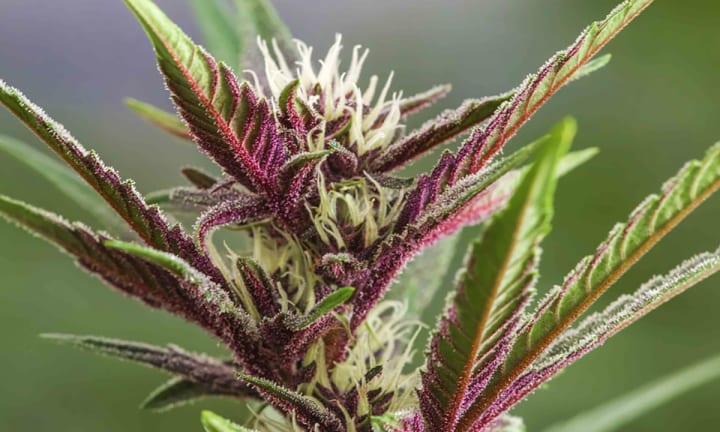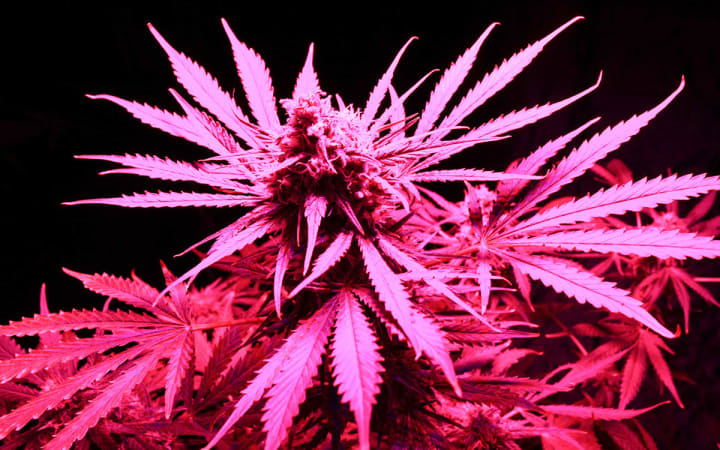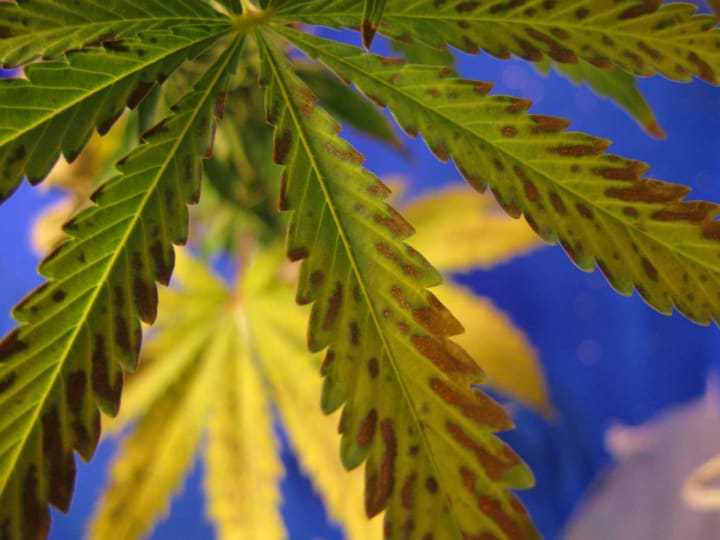Why Is Weed Different Colors?
Only a kaleidoscope can compare to the beauty of the cannabis. Taste the rainbow while preparing your next joint.

Would you rather eat skittles and taste the rainbow or would you prefer to take in its colors while preparing a fat joint? After that reflective puff, you gaze at your stash thinking why is weed different colors.
Wondering why weed is different colors is like asking yourself why is the sky blue. As for the sky’s hue, you need to contact NASA. Nevertheless, when it comes to bud, you will find the following information very cooperative. Only a kaleidoscope can compare to the beauty of cannabis. You may find yourself in a trance while thinking about why weed is different colors.
Bud DNA
The colors of cannabis amaze the connoisseur every time. Who doesn’t enjoy the smell, taste, and color of some beautiful bud? What's more enticing than a myriad of dazzling colors from the bud you placed in your grinder? Some strains of cannabis change color as they bloom. Ninety three percent of customers make purchasing decisions based on these factors.
The mystery revolves around genetics. Anthocyanins are a group of around 400 water-soluble pigment molecules classified as flavonoids. They materialize as red, blue, or purple according to their PH. Flavonoids are generally yellow in appearance, hence their name, which is derived from the Latin word for yellow, flavus.
Flavonoid components do not affect the taste and smell of the plant. Flavonoids and carotenoids are both phytonutrients. The single-pigmented carotenoids are largely responsible for the colors that show up on your ganja. This should begin to answer the question: Why is weed different colors?
Canna-Chameleons

Weed doesn’t produce colors until the latter half of the flowering stage. Temperature is an essential component to the color equation as cooler temps forbid chlorophyll production.
Established by the strain’s pedigree, certain other colors will appear when you drop the temperature. The light cycle shortens, impersonating the changes in the seasons. During flowering, you can enhance or minimize certain anthocyanins bringing out distinct colors.
Deep Purple
Various strains of cannabis come with different cannabinoid levels, flavors, and anthocyanins. These elements may cause your euphoric mouth to salivate while your eyes are dipped in pleasure. Nothing seems more mythical than the strain of the purple haze. It's more than just a psychedelic hit song; its gorgeous bud is available in popular strains such as Purple Urkel and Granddaddy Purple.
Purple is actually one of the most common hues for cannabis and can be attained effortlessly by a knowledgeable breeder. Mature strains of purple have the initial genetic ability to generate anthocyanin pigments. Environmental conditions must be converged to get that purple color, such as air-cooled night time temperatures.
Ruby Red and The Pink Flamingo

Red roses are plants that define love and loyalty, but besides that, canna-seurs across the globe prefer buds and leaves. Unfortunately, red bud flowers aren't as common as the valentine favorites, but it is just as sensational. Ruby weed such as The Pink Flamingo displays some phenotypes with fuchsia and pink hues. These colors are amazing and again make you wonder, why is weed different colors?
Just because a strain may have pink or red in its name doesn’t mean that it’s going to blow your mind. Scarlet-haired strains are not always superior and dank. Don’t measure the strength of the cannabis based on its color. The red buds get their color from complex deprivation of phosphorous and other supporting nutrients. If you happen to locate the crimson weed via treasure map, word of mouth or a dispensary; cherish the ganja as you would a sunset in the evening.
Sunset Bud Blvd
Carotenoids give cannabis those citrus shades of gold, yellow, and bubbly champagne. Under alkaline conditions, they grow healthy and powerful. As the carotenoids predominate the plants, they will naturally come out as the flowering phase comes to a close.
Color Meanings
Purples, pinks, and reds are signs to a cannabis farmer that the cannabis is potent; however, green indicates that the plant was grown in cold temperatures. Cooler climates are integral in the color of your weed. Purple bud is attractive. However, green sparkling bud is known to turn more heads than a dose of the sweetest eye candy. Cannabis completes its life cycle within one year. Because of chlorophyll, the ganja is green for the majority of its lifespan. Green indicates healthy marijuana and guarantees delicious kief at the end of the night.
Weed Deficiencies

Prosperous cannabis plants are vivacious and filled with emerald brilliance, leading us to wonder why weed is different colors after all. In many cases, leaves and stems suffering from nutrient deficiencies changes from green to assorted colors.
A lack of nitrogen in marijuana plants creates yellow leaves which are an indicator of diminished chlorophyll production. Plants absent of phosphorus generates small, dark, and green leaves with violet veins. When a plant lacks potassium, the leaves turn yellow, then it becomes brown and perishes into the wind. Deficiencies in magnesium, zinc, and calcium all cause color changes. This can be the aftermath of genetic and environmental issues.
Bud Is In the Eye of the Beholder
Naturally, cannabis leaves change colors and die off as the plants reach their finishing stage, which usually occurs during the autumn. This phenomenon causes shades of green, yellow, gold, and other hues. Anthocyanins cause plants to turn crimsons and purples and are produced by using excess sugars in leaves through cell fluids.
Black hybrids have dark purplish buds regardless of the temperature. The rare and highly pursued black strains are valued indicas. Who or what is responsible for this gift from nature: Anthocyanin? Well, anthocyanin in cannabis is the same compound found in plants like black rice, eggplant, black currants, and black/blue tomatoes. The cannabis grows in colors ranging from violet to mauve white. Gold-colored bud is created by starving the plant.
Genetics, maturity, PH, the amount of light, temperature, and even available sugars can influence the color of cannabis. Strangely enough, you can use Kool-Aid to water your cannabis plants to influence their colors. Kool-Aid may not be the best option for your thirst, but the plants do love it.
May these words comfort you as you begin to realize the answer to the curiosity of why is weed different colors.
About the Creator
Johnny Hash
Born in Kingsland, Arkansas. Spent way too much time watching TV. Daily toker. Still in Kingsland, Arkansas.






Comments
There are no comments for this story
Be the first to respond and start the conversation.